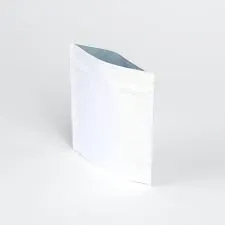- Afrikaans
- Albanian
- Amharic
- Arabic
- Armenian
- Azerbaijani
- Basque
- Belarusian
- Bengali
- Bosnian
- Bulgarian
- Catalan
- Cebuano
- chinese_simplified
- chinese_traditional
- Corsican
- Croatian
- Czech
- Danish
- Dutch
- English
- Esperanto
- Estonian
- Finnish
- French
- Frisian
- Galician
- Georgian
- German
- Greek
- Gujarati
- haitian_creole
- hausa
- hawaiian
- Hebrew
- Hindi
- Miao
- Hungarian
- Icelandic
- igbo
- Indonesian
- irish
- Italian
- Japanese
- Javanese
- Kannada
- kazakh
- Khmer
- Rwandese
- Korean
- Kurdish
- Kyrgyz
- Lao
- Latin
- Latvian
- Lithuanian
- Luxembourgish
- Macedonian
- Malgashi
- Malay
- Malayalam
- Maltese
- Maori
- Marathi
- Mongolian
- Myanmar
- Nepali
- Norwegian
- Norwegian
- Occitan
- Pashto
- Persian
- Polish
- Portuguese
- Punjabi
- Romanian
- Russian
- Samoan
- scottish-gaelic
- Serbian
- Sesotho
- Shona
- Sindhi
- Sinhala
- Slovak
- Slovenian
- Somali
- Spanish
- Sundanese
- Swahili
- Swedish
- Tagalog
- Tajik
- Tamil
- Tatar
- Telugu
- Thai
- Turkish
- Turkmen
- Ukrainian
- Urdu
- Uighur
- Uzbek
- Vietnamese
- Welsh
- Bantu
- Yiddish
- Yoruba
- Zulu
metalic paper
The Rise of Metallic Paper A Game Changer in Printing and Design
In the ever-evolving world of printing and design, metallic paper has emerged as a transformative medium that elevates aesthetics and brings creativity to new heights. Combining a reflective surface with a wide range of color options, metallic paper has captivated the imaginations of artists, designers, and marketers alike. This article explores the characteristics, applications, benefits, and future of metallic paper, illustrating why it has become an essential component in modern print materials.
Understanding Metallic Paper
Metallic paper is distinguished by its shiny, reflective finish, which can range from silver and gold to vibrant hues like copper and rose gold. The unique texture and surface of metallic paper enhance the vibrancy of printed colors, allowing for a striking visual impact that standard papers cannot achieve. This paper is often coated with a metallic pigment that reflects light, giving printed materials a dynamic and eye-catching appearance.
Applications in Various Industries
Metallic paper is not limited to one sphere of influence; it finds applications in numerous industries, including graphic design, photography, luxury packaging, and greeting cards. In graphic design, artists use metallic paper to add depth and dimension to their work, creating invitations, business cards, and promotional materials that stand out in a crowded marketplace.
The photography industry also benefits from this medium, as metallic paper enhances prints, bringing out the colors and details in a way that traditional photo paper can’t. It provides a modern twist to fine art prints and is widely used for limited edition releases. Furthermore, in the realm of luxury packaging, brands leverage metallic paper to convey elegance and sophistication. Items packaged in metallic paper exude an aura of exclusivity, making them particularly appealing to upscale consumers.
Advantages of Metallic Paper
One of the primary advantages of metallic paper is its ability to capture attention. When used in marketing materials, it can significantly increase consumer interest and engagement. The reflective quality of metallic paper not only enhances visual appeal but also adds a tactile element to printed materials, making them memorable to the touch and sight.
metalic paper

Moreover, metallic paper is highly versatile. It is compatible with various printing methods, including digital, offset, and screen printing. This adaptability allows designers to experiment with different techniques and styles, unleashing boundless creative potential.
Another notable advantage is durability. Many types of metallic paper are engineered to resist wear and tear, making them suitable for items that are frequently handled, such as menus, brochures, and packaging labels. The robustness of metallic paper extends the lifespan of printed materials, ensuring they remain vibrant and intact over time.
The Challenges of Using Metallic Paper
Despite its many benefits, metallic paper does present some challenges. It requires specific printing techniques and considerations; for instance, certain inks may not adhere well to its glossy surface, necessitating adjustments in the printing process. Additionally, the cost of metallic paper is typically higher than standard paper, which may limit its use for some projects.
Another consideration is the environmental impact of metallic paper production and disposal. Many consumers and designers are increasingly prioritizing sustainable practices, leading to a demand for eco-friendly alternatives. As a result, manufacturers are exploring ways to create recyclable metallic papers that blend aesthetics with sustainability.
Future of Metallic Paper
The future of metallic paper appears bright, driven by trends in design and consumer preferences. As technology advances, we can expect to see innovations that improve the quality, sustainability, and affordability of metallic paper. Furthermore, as the digital landscape continues to grow, integrating metallic elements into digital designs might provide new avenues for creativity, allowing artists to bring the allure of metallic textures into their online works.
In conclusion, metallic paper represents a significant development in the realm of printing and design. Its unique characteristics make it a powerful tool for creating striking, memorable materials that engage and inform. As industries continue to evolve, embracing sustainability and new technologies, metallic paper is likely to remain at the forefront of innovative design, inspiring creativity and setting new standards for visual communication.













